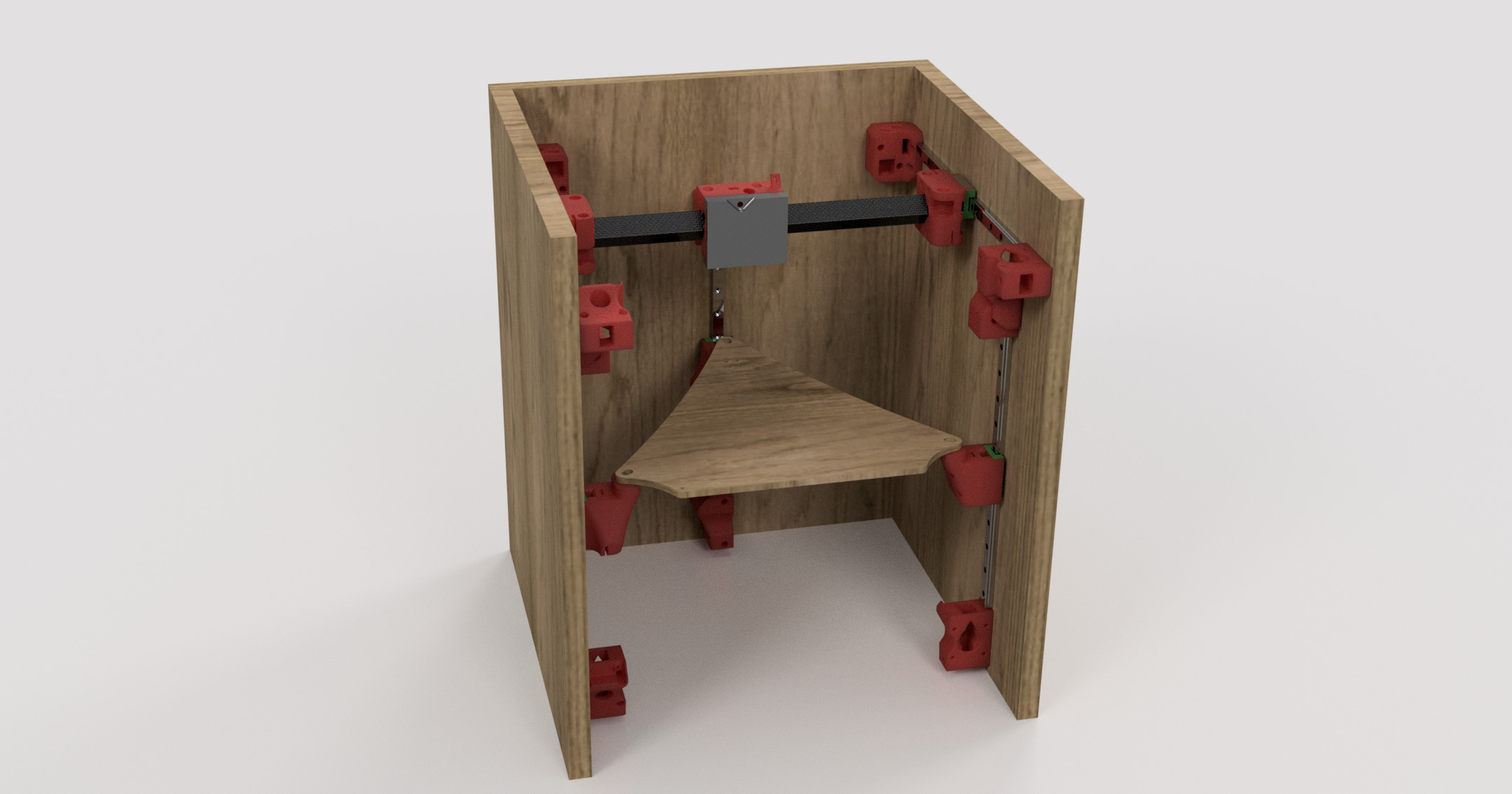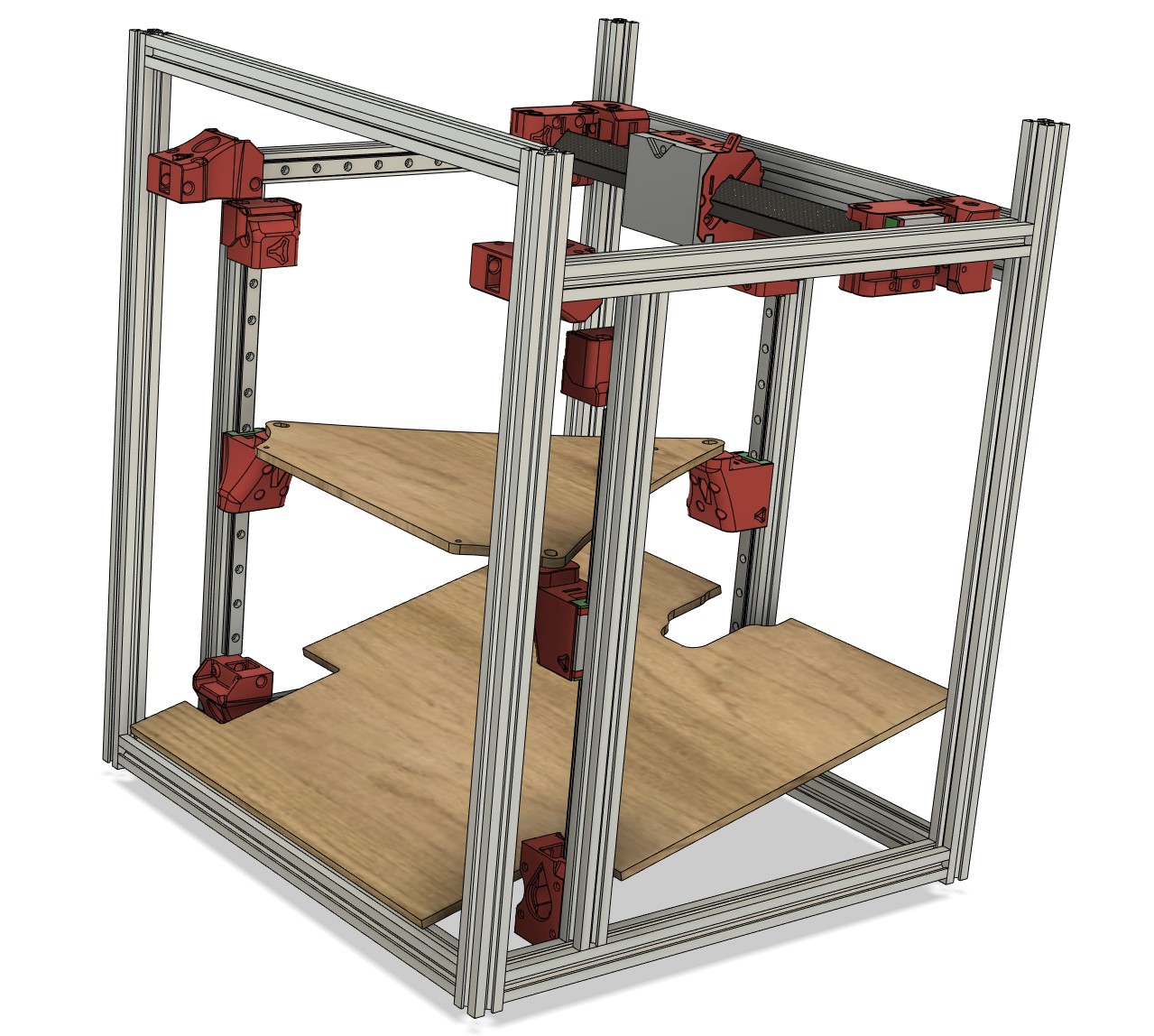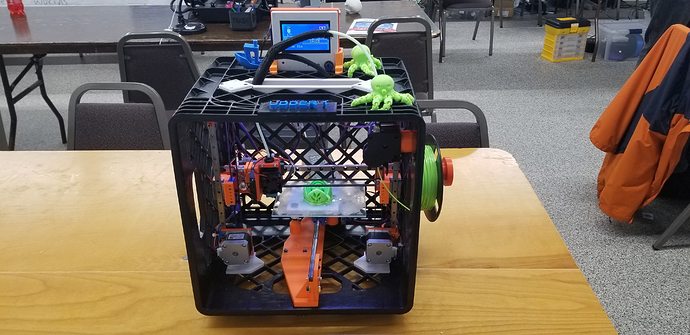I can’t stop thinking about updating my print farm. I have a few projects in the works but I keep gravitating to the printer ideas.
- 10/1 PrusaPrinters release
*Update 9/20/21 - Just about there, rough renders.
CAD and 3MF FIles - https://a360.co/381SaiQ As of V107…please know this is not done yet but it is very close. Please consider these files under this license for now [Creative Commons License] This work is licensed under a Creative Commons Attribution-ShareAlike 4.0 International License.
**I learned fusion360 for this project so you can have the actual CAD to edit. Please be nice, I know I made a lot of mistakes early on but it does work. As I progress and edit files I am fixing any early mistakes I made.
-
Aluminum extrusions or panel frame?
I love the way extrusions look, but I am just not a fan of working with them. I have no real interest in being a 3d printer company…and most of us have CNC machines. So DIY wood frames (basically a box with holes), or extrusions? Extrusions are easy and cheap to ship so I would surely go that way if that was my goal but why not make a box with holes for mounting parts instead. That even solves the issue of semi enclosing it as well.A)Accommodated both.
-
Direct Belt Drive Z axis.
A) Looks to be precise enough to max out the BLTouch’s capabilities, the marlin accuracy test shows this, and prints looks fantastic. Downside, bed does not typically hold itself up after a print so ending GCode includes G0 Z220 F1000 to end every print at the bottom…plus that is easier for part removal.
B) Belts do not over constrain the axis or induce wobble to the plate. -
CF Rail and wheels
A) Works fantastic.
B) Lighter than a linear rail, and only gets better with size. -
Low unique part count.
A)Easier to source, easier to keep track of printing parts.
B)Easier to kit up…
C)11 unique main parts, nothing is used only once. Proud of this one. -
True Autolevel
A) Future possible power recovery (homes to Z max), and non-planar printing.
-
Tool plate simple to modify and edit
A)Tool plate as in lasers, direct drive or bowden extruder, or even a drag knife.
**Bed plate is currently a CNC’d part but does not have to be, a simple printed part and some extrusions would work as well.
Hemera mount with Bl Touch and Fan - https://a360.co/3AAP0yA
SKR Pro Board wire management - https://a360.co/3BwUxXZ, PrusaPrinters SKR Pro Wire bracket by Allted - Thingiverse



